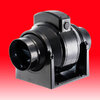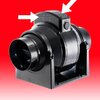As I've said, if one half-wave-rectifies a sine wave supply, the RMS of the rectified voltage will be the original RMS divided by √2, not (as you seem to have assumed) divided by 2
Someone has asked me, off list, to explain the reason for the above - so, in case anyone else doesn't know, but would like to ...
"RMS" voltage is shorthand for "
Root
Mean
Square" voltage - and that means the square root of the "mean square voltage", that being the average (arithmetic mean) of the squares of the instantaneous voltage at every point in time during a cycle (or any whole number of cycles) of the AC waveform. That is true for any waveform.
In essence, the explanation of the above is simply this - when one half-wave rectifies (i.e. only every other half cycle present, the voltage being zero during the other half-cycle), "the instantaneous voltage at every point in time" during one of the half-cycles (hence also the square of that voltage) during one of the half-cycles reduces to zero, so the average of those squared voltages (the mean square) reduces by a factor of 2 (i.e. halves). However, when one takes the square root of that to get RMS, then the reduction (compared with the situation without rectification becomes a factor of 'the square root of 2'.
It sounds complicated, and may be difficult to understand when written in prose as above. If anyone has difficulty, I can try a different way of explaining, based on 'areas under the curve' of a plot of the 'voltage squared'.
Some simple relationships follow from the above, with examples of a 240V RMS supply:
...With an RMS of 240V, the peak voltage is 240 x √2 = about 340V. That remains true after half-wave rectification.
...With half-wave rectification of a 240V RMS supply, the RMS reduces to 240 / √2 = about 170V
...It follows from the above two relationships that with half-wave rectification of any supply voltage, the RMS of the half-wave rectified voltage is half the peak voltage - so, again, if the peak voltage is about 340V (both rectified and unrectified), then with half-wave rectification, the RMS becomes 340 / 2 = 170V
I hope that may possibly afford a little help to at least some people!
Kind Regards, John



